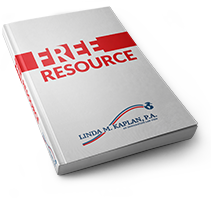We have been hearing so much recently about stopping Chain Migration. This pejorative term often comes with misleading information. So I am writing to put this into perspective along with the facts and some historical background.
Much of the talk today reminds me of the National Origins Act of 1924, a discriminatory immigration law that restricted the immigration of Southern and Eastern Europeans and practically excluded Asians and other nonwhites from entry into the U.S. This act instituted admission quotas by using the 1890 census to determine the population of a particular nationality group; the government then only allowed 2% of that population into the nation. In addition, the act completely barred immigration for all those whom the Supreme Court prohibited from obtaining U.S. citizenship, specifically Asians.
It was clear that the intent of this law was to keep out the Catholics from Ireland and Italy and the Jews from Eastern Europe. The clear intent was to allow white Protestants to come to the U.S. and to keep out the “others.” Proponents of the act wanted to “maintain the racial preponderance of the basic strain of our people and thereby to stabilize the ethnic composition of the population.” It was argued that the southern/eastern Europeans and Jews arrived sick and starving and therefore were less capable of contributing to the American economy and unable to adapt to American culture. Under this law 86.5% of the visas were allocated to those from NW Europe and Scandinavia, 11.2% to eastern and southern Europe and the remaining 2.3% were allocated to all other countries. The National Origins Act also drastically lowered the annual quota of immigration, from 358,000 to 164,000
The rhetoric and the proposals being discussed to stop Chain Migration and to limit legal immigration seem to be a revival of the hate and bigotry behind the National Origins Act of 1924. Let’s not go back there.
Chain migration is a derogatory term for family based immigration. The Immigration and Nationality Act of 1965 adopted a system of allowing immigration based on business petitions as well as family petitions. According to data from the Department of Homeland Security approximately 63% of the people who obtained green cards from 2007 until 2016 did so through family petitions.
So what family members can be sponsored for residence? Those with permanent resident status (green cards) can sponsor only spouses and unmarried children. U.S. citizens can also petition for their parents, siblings and married adult children. Contrary to what you hear, no-one can petition for grandparents or cousins or more distant relatives. And the fact that you can file a petition for a close relative does not mean that they can come to the U.S. quickly. The law has strict limits on the number of immigrant visa that are issued each year. The limits mean that if you are a U.S. citizen who petitions for a sibling, the wait to actually get your sibling here can easily be 14 years. If you are a U.S. citizen and file for a married adult child, the wait is estimated to be 10-12 years. A citizen filing for an unmarried adult child can expect to wait 5-6 years to be reunited with that child in the U.S.
So the next time someone mentions Chain Migration, understand that what they are talking about is family reunification.
- Refugees, Asylum, and other humanitarian relief. - February 9, 2024
- Florida Anti-Immigrant Legislation - May 30, 2023
- Undocumented Immigrants Pay Taxes—Even Income Taxes. - April 25, 2023


